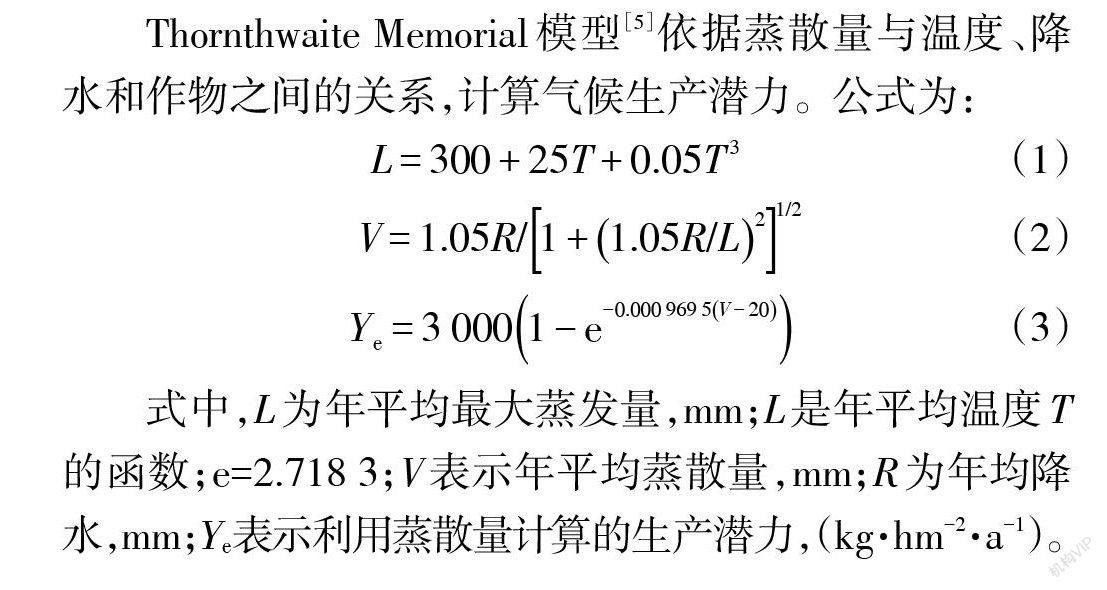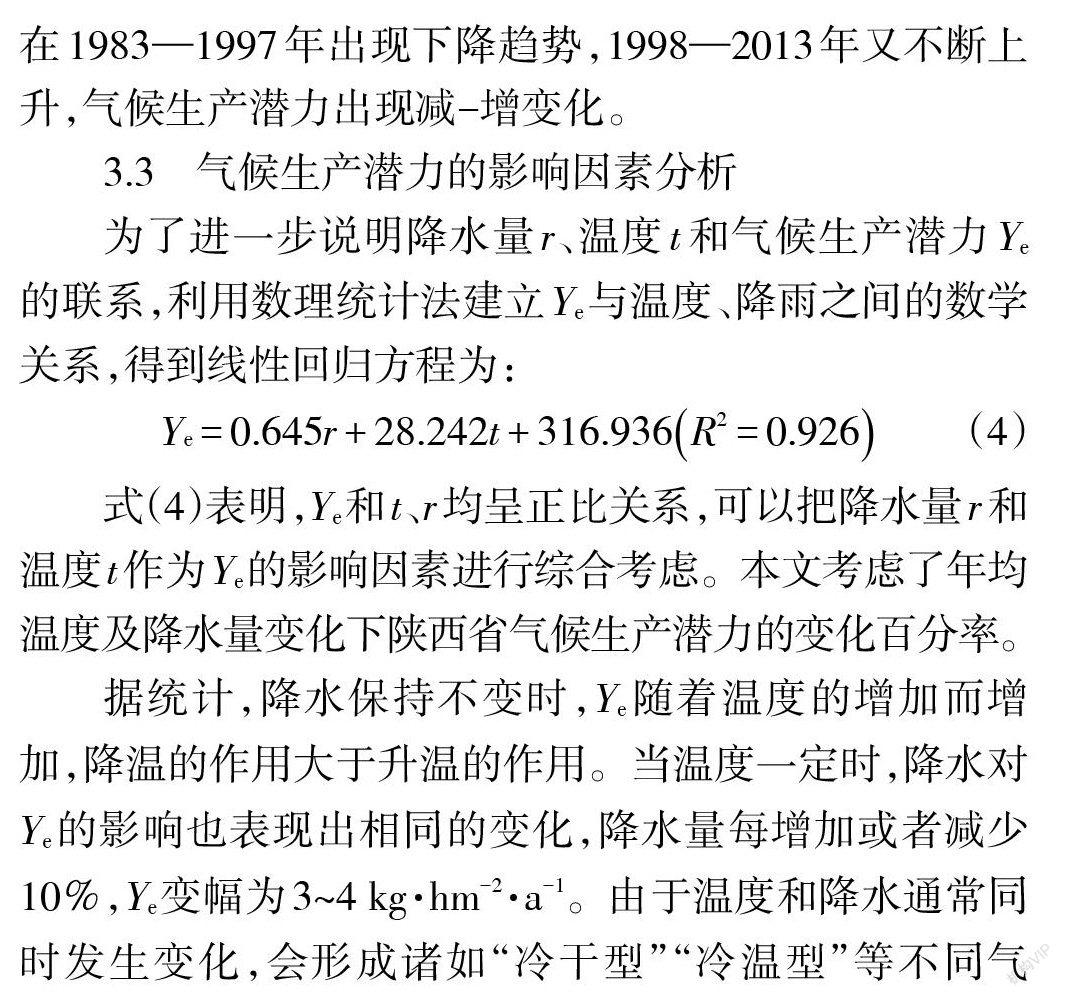1958—2013年陜西省氣候生產潛力的時空變化
馮瑞



摘 要:為了對未來陜西地區農作物的區域分布、種植制度等方面提供科學依據,本文利用陜西省10個氣象站臺1958—2013年的降水和溫度數據資料,利用Thornthwaite Memorial模型等方法研究陜西省氣候生產潛力的時空變化。結果表明:①56年來,陜西省氣候生產潛力微弱下降,具有南高北低的空間分布特征,總體由南至北遞減。②氣候生產潛力與溫度的相關性不如降水顯著,降水量的降低是限制氣候生產力的主要因素。
關鍵詞:陜西省;氣候變化;Thornthwaite Memorial 模型;氣候生產潛力
中圖分類號:S162? ? ? ? 文獻標識碼:A ? ? ? 文章編號:1003-5168(2021)24-0116-03
Temporal and Spatial Changes of Climate Production Potential in Shaanxi Province from 1958 to 2013
FENG Rui
(School of Earth Sciences and Resources, Changan University, Shaanxi Xi'an? 710054)
Abstract:In order to provide a scientific basis for Shaanxi Province in the regional distribution and planting systems of crops in future, the precipitation and temperature data of 10 meteorological stations in Shaanxi Province from 1958 to 2013 were used in this paper. By the means of the Thornthwaite Memorial model and other ways to study the temporal and spatial changes of the climate potential productivity in Shaanxi Province. The results show that: ①The climate production potential of Shaanxi Province declined slightly in 56 years, with a spatial distribution characteristic of high in the south and low in the north, it is decreasing from south to south. ②The correlation between climate potential productivity and temperature is not as significant as precipitation, and the decrease in precipitation is the main factor limiting climate productivity.
Keywords: Shaanxi Province; climate change; Thornthwaite Memorial model; climate productivity potential
21世紀以來,氣候變化的顯著特征之一就是氣候變暖,在全球氣候變暖的大背景下,氣候生產潛力成了氣候變化所影響的一個方面。只有在明確氣候生產潛力變化的基礎上,才能夠有針對性地制定有效措施保證糧食產量和安全。在氣候變化對作物生產潛力的影響研究方面,20世紀80年代,德米季洛伊科[1]提出了有效降水量的概念,并建立了水分效應模型。櫻谷哲夫[2]從生理角度論述了作物蒸散與其生產潛力的關系。王鶯鶯[3]等人運用全球生態區模型(GAEZ),分析了陜西省不同地理單元作物生產潛力變化趨勢,找出了影響作物生產潛力的主要因素。趙放[4]等人運用EOF經驗正交函數等方法,分析了旱作玉米降水利用效率潛力時空演變特征。
綜上所述,如何挖掘生產潛力成為農業生產方面的一個重要課題,本文利用Thornthwaite Memorial模型計算陜西省氣候生產潛力,研究了時空變化特征,分析了氣候生產潛力與降水、溫度之間的關系,對未來陜西地區農作物的區域分布、種植制度等方面提供科學依據,對陜西省作物生產潛力的研究具有深遠意義。
1 研究區概況
陜西省位于中國西北部,地處107.4°~109.48°E,33.42°~34.45°N,全身地域狹長,地勢南北高,從北到南可以分為陜北高原、關中平原、秦巴山地三個地貌區。陜西省是新亞歐大陸橋亞洲段和中國西北、西南、華北、華中之間的門戶,具有承東啟西、連接西部的區位之便。根據地形地貌特點,陜西分為陜北(榆林、延安),關中(西安、寶雞、渭南、銅川、咸陽)以及陜南(商洛、安康、漢中)。
2 數據源及研究方法
2.1 數據源
根據陜西省的地理情況和地貌特征,選取10個站點,收集1958—2013年的相關氣象資料,包括逐年平均溫度、最高和最低溫度、降水量等,資料來源于中國氣象數據網(http://data.cma.cn)。地面氣象資料站臺選擇原則是站臺具有一定的代表性且均勻分布在研究區內,在保證有較長時間序列的基礎上選取盡可能多的站點。
2.2 研究方法
Thornthwaite Memorial模型[5]依據蒸散量與溫度、降水和作物之間的關系,計算氣候生產潛力。公式為:

